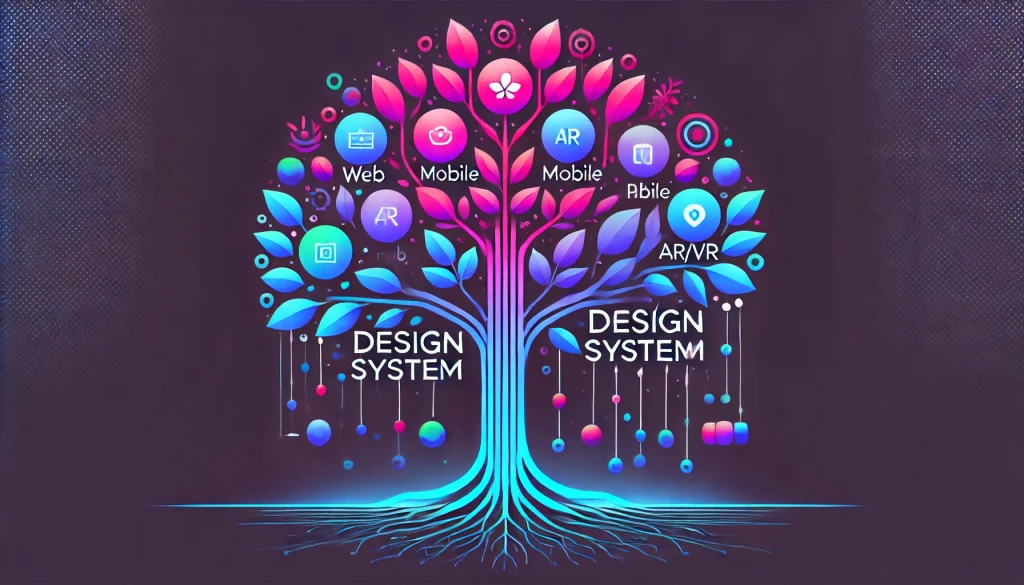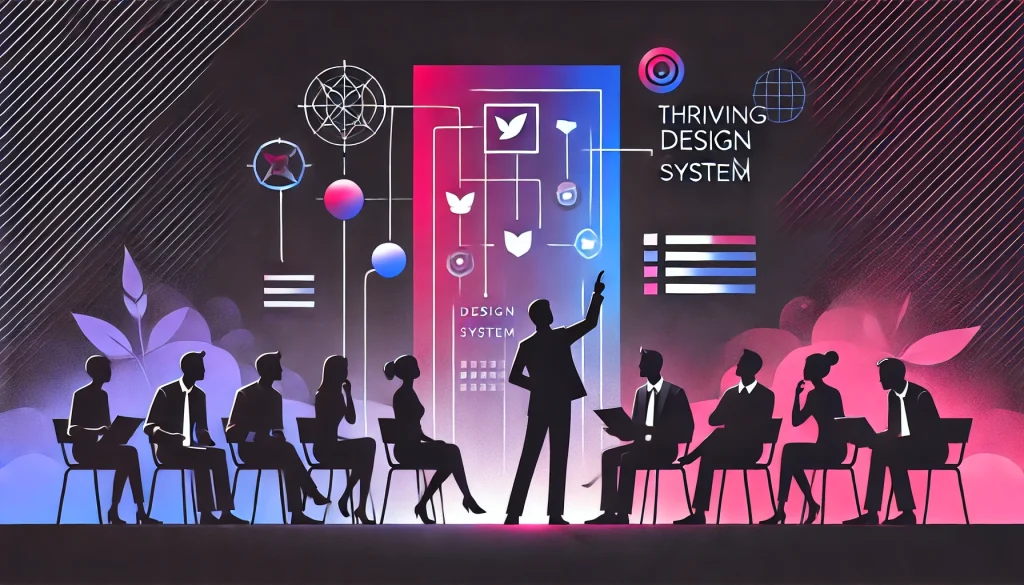
Across industries, organisations are drowning in design inconsistencies. Product teams work in silos, developers rebuild the same components from scratch, and designers struggle to maintain coherence across growing digital portfolios.
A study by Limina revealed that 86% of companies fail to integrate design across their organisations, leading to inefficiencies and missed business benefits. As companies scale, this design fragmentation doesn’t just slow down development — it threatens the customer experience and brand integrity that businesses have spent years building.
But what if we fundamentally rethought how design systems operate within organisations? Moving beyond static style guides and component libraries, companies are discovering that the key to successful digital transformation lies in treating design systems as living, evolving organisms that grow and adapt with their organisation’s needs.
The Evolution of Design Systems

Traditionally, design systems were focused on maintaining UI consistency across digital products. While that remains a core function, modern design systems have evolved to tackle broader challenges:
- Scalability & Cross-Platform Adaptability: Design systems must now accommodate an ever-growing variety of platforms, including mobile, web, and emerging technologies such as AR/VR.
- Brand Identity vs. Customisation: Striking a balance between global brand consistency and local or product-specific customisation is key for user engagement.
- Compliance & Accessibility: Integrating regulatory and accessibility compliance from the beginning ensures that products are not only legally sound but also inclusive to a wider audience.
Pro Tip: Regularly update your design systems to incorporate feedback, align with business goals, and stay ahead of technological advancements. This ensures they remain adaptable and effective.
Challenges in Digital Transformation

As organisations scale, maintaining coherence and efficiency in design systems becomes complex. Some of the most pressing challenges include:
1. Legacy System Integration
Older systems often don’t align with modern design frameworks, creating friction in digital transformation efforts. Organisations that still rely on traditional, monolithic architectures find it difficult to transition to modular, scalable systems.
Solution: Prioritise backward compatibility and gradually introduce modular updates, ensuring an effortless transition without disrupting existing workflows.
Sameer, Design Lead at Google, puts it well: “Backward compatibility is crucial — you can’t force users to upgrade, but you can make it compelling.”
2. Compliance and Accessibility
Industries like finance, healthcare, and government services demand strict adherence to compliance regulations, security protocols, and accessibility guidelines.
As Suresh, Product Design Leader at ServiceNow, explains: “Accessibility and compliance need to be built into the system from the ground up. This ensures legal requirements are met while also improving user experience.”
Solution: Implement compliance checks at every stage of the design process. Use automation tools to validate accessibility and regulatory adherence before product releases.
3. Talent Shortages
Skilled designers and developers with expertise in systems thinking and cross-functional collaboration are in short supply.
Suresh further remarked, “Finding talent that truly understands design systems is extremely hard. It requires a mix of design, engineering, and strategic thinking.”
Solution: Invest in up skilling programs, mentorship initiatives, and hiring strategies that focus on cultivating in-house expertise.
4. Fragmented Team Structures

Design, engineering, and product teams often work in silos, leading to misaligned objectives and inefficiencies.
Solution: Establish cross-functional governance committees and ensure open communication channels to align design goals across departments.
5. Constantly Changing User Expectations
Consumers now expect personalised, smooth , and intuitive digital experiences across all platforms, requiring businesses to continuously refine their design strategies.
Solution: Adopt a feedback-driven approach, conducting regular usability tests and data analysis to keep up with user preferences and technological advancements.
Emerging Trends and Best Practices

i. AI-Powered Design Automation
Artificial intelligence is transforming design systems by automating repetitive tasks, enabling AI-driven layout suggestions, copywriting, and compliance checks. This frees up designers to focus on higher-level strategic and creative work.
ii. Continuous Feedback Loops
A dynamic design system should integrate user insights, internal team feedback, and real-time analytics to evolve over time. Example: Companies like Airbnb and Google constantly refine their design systems based on real-world user interactions and A/B testing.
iii. Regulatory Integration
Proactively embedding regulatory guidelines into design systems minimises the risk of non-compliance.
Shubhanga, Founder of 1st Principles, stated, “Regulatory considerations in fintech design can make or break the user experience, especially in high-stakes environments.”
iv. Tokenization for Cross-Platform Consistency
Design tokens allow teams to maintain consistency across multiple platforms while enabling flexibility to customise UI elements per platform or brand requirement.
v. Adaptive & Inclusive Design
By integrating accessibility best practices and localised adaptations, organisations can expand their reach and create truly user-friendly experiences. Example: Apple’s design system ensures seamless accessibility by providing voice-over functionalities, customisable font sizes, and high-contrast UI elements.
Pro Tip: Use AI tools to streamline design operations while maintaining a human-centric approach. Also, encourage an iterative approach where feedback and data drive design enhancements.
Leadership in Design Transformation

Effective leadership is crucial for ensuring that design systems remain agile, scalable, and impactful. Key leadership strategies include:
- Investing in Talent: Support ongoing education and training in systems thinking and digital transformation to ensure teams remain ahead of industry trends.
- Encouraging Cross-Team Collaboration: Breaking down silos between design, engineering, and business teams fosters holistic innovation and ensures seamless implementation of design systems.
- Championing Adaptability: Recognising that design systems are evolving entities rather than rigid rulebooks ensures continuous improvement and innovation.
- Aligning with Business Goals: Design systems should drive business objectives, not just aesthetics, ensuring they contribute to growth, user engagement, and operational efficiency.
Pro Tip: Regularly communicate the strategic importance of design systems to stakeholders at all levels. Demonstrate their value by linking them to business outcomes such as increased user engagement, faster deployment times, and brand consistency.
The Bottom Line

According to the Sparbox team, developing a simple form page was 47% faster with a design system than coding from scratch, highlighting the efficiency and time-saving potential these systems offer. This success depends heavily on strong leadership that understands their strategic importance, invests in talent development, and promotes a culture of adaptability.
As user expectations continue to evolve and new technologies emerge, organisations that treat their design systems as living organisms – capable of learning, growing, and evolving – will be best positioned to deliver exceptional digital experiences while maintaining operational efficiency at scale.
Also Read: Beyond Design Systems







